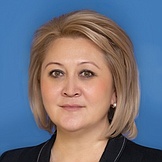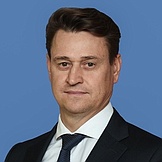Regional flags and emblems


PROFILE
Established 23 March 1919 as the Bashkir Autonomous Soviet Republic, the Republic of Bashkortostan since 1992
Capital Ufa
The Republic of Bashkortostan is part of the Volga Federal District
Area 142,900 sq km
Population 4 046 100 (2025)
Ethnic groups
(2020 National Census, %)
Russian – 37,49
Bashkir – 31,52
Tatar – 24,21
Mari – 2,11
Chuvashs – 2,00
Other – 2,67
Administrative divisions (2024)
Municipal districts– 54
City districts – 9
Rural towns – 14
Rural districts – 818
Geography and climate
The Republic of Bashkortostan is located in the Southern Urals and the adjoining valleys of the Ural foothills. The western part is valley while the eastern part is mountainous (Yamantau Mountain – 1,640 m). The Bashkir Trans-Ural meets the West Siberian Plain in the east.
At its widest points, the region is 540 km from north to south and 420 km from west to east.
The republic borders the Perm, Sverdlovsk, Chelyabinsk and Orenburg regions as well as the Republic of Tatarstan and the Republic of Udmurtia.
The region has a continental climate. January is the coldest month (average temperature –12.7°C) and July is the hottest (average temperature +18.5°C). It is home to Bashkiria National Park, three state natural reserves and five natural parks.
Government
The legislative branch is represented by the State Assembly, or Kurultai, of the Republic of Bashkortostan, which is the permanent, supreme and only body of legislative (representative) authority of the Republic of Bashkortostan. It has 110 deputies elected for five years, with 55 running in single-mandate constituencies and the other 55 in the single electoral district in proportion to the number of votes cast for lists of deputies nominated by electoral associations.
The current State Assembly was elected in September 2023. The term expires in September 2028.
The executive branch in the Republic of Bashkortostan is represented by the Government, led by the Head of the Republic of Bashkortostan. The Government is the supreme and permanent body of executive authority and heads the system of executive agencies of the republic.
The Head of the Republic of Bashkortostan is the region’s highest-ranking official, who forms the Government of the Republic of Bashkortostan and directs its activity.
He is elected for a term of five years by citizens of the Russian Federation residing in the territory of the republic. The term of office of the current incumbent expires in September 2029.
Economy and natural resources
Bashkortostan is one of the leading industrial and agricultural regions in Russia. Major industries include fuels, chemicals and petrochemicals, power production, metals and machinery, consumer goods, agriculture and food.
Minerals and raw materials in the region include oil and natural gas (over 200 fields), coal, turf and copper-sulfide ores with copper, zinc, sulfur, lead, gold, silver, cadmium, selenium, tellurium, indium and gallium. There are over 50 springs with mineral waters, therapeutic muds and thermal steam.
The republic is one of the largest oil production and refining hubs, with the fuel and energy sector accounting for a major share of its industrial output. In fact, up to 50% of the goods produced in the republic come from the fuel and energy sector.
Branches of Bashneft, UMPO (Ufa engine-building production association), The Ufa engine-building production association, Gazprom Neftekhim Salavat, Beloretsk Metallurgic Company, Nefaz (Neftekamsk auto-making plant), Polief, Bashkir Copper and Utchaly mining complex are the largest industrial companies of Bashkortostan.
Processing companies make a significant contribution to the production of industrial goods, including timber, metals and metal products, leather, shoes, rubber, plastics, electric equipment, machines and equipment, and chemical products.
Local agriculture is characterised by high productivity, the application of science and technology, and well-developed infrastructure. Grain, cereals, legumes, feeds, potatoes and other vegetables are the main crops. Dairy and meat are the main livestock products.
Culture and tourism
Bashkortostan is a land of endless steppe, soft landscapes of the Ural foothills, the water kingdom of the Agidel river and the tender music of the kurai, the national instrument of Bashkiria. This is the only Russian region where traditional honey hunting has survived.
The region has about 300 karst caves, 600 rivers, 800 lakes and numerous mountain ridges. Bashkortostan has a multiethnic population of over 100 ethnic groups, which is reflected in the wide range of cultural, historical and natural landmarks found here: over 4,000 historical, art, cultural and archaeological landmarks, 12 state theatres and 97 museums with over 450,000 exhibits.
Bashkortostan has stunning beauty and amazing variety to offer. The ancient Urals are the main tourist attraction. These magnificent mountains and crystal-clear rivers and lakes are lauded in ancient Bashkir legends. Ski resorts are a main draw for tourists today.
The national hero is Salavat Yulayev, the comrade of Yemelyan Pugachev, and his name is commemorated on the republic’s emblem.
The largest ski resorts – Abzakovo, Bannoye, Mratkino, Pavlovsky Park, Uyazy-tay, Kandry-kul and Kush-tau – receive up to 800,000 tourists.
Bashkortostan is full of fantastic treasures: numerous therapeutic springs, unique mixed forests with climatic health benefits, as well as therapeutic geothermal gases and muds. The region has restorative health centres for almost all classes of ailment. Russian cosmonauts do their post-flight rehabilitation in Krasnousolsk Health Resort, and Yangan-Tau Health Resort has been considered the best Russian health resort for several years running.
The Republic of Bashkortostan offers stunning natural beauty, diverse landscapes, clean water and air, kind-hearted people and preserved local traditions and crafts. It is also one of the few places from which Islam started spreading across Eurasia. Among the peoples of the Urals, the Volga Region and Central Asia, the region is known as the homeland of the Batyr warriors, important historical figures, theologians and holy people.


